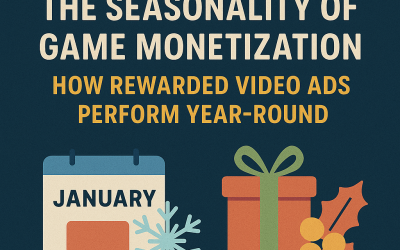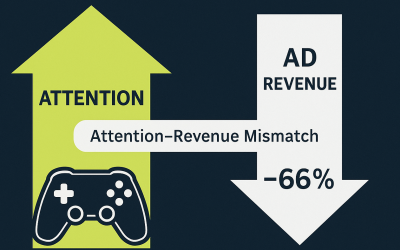The Economics Behind “Gated Content”
4.6 billion pieces of content are produced every day! However, the challenge for content creators and publishers lies in monetizing their content effectively. One increasingly popular strategy is the implementation of paywalls or subscription walls—methods that restrict access to certain content, requiring users to pay for entry.
While it’s not my favorite monetizing tool (esp. as a reader), I want to discuss my take on “Gated Content”. I will start by defining Gated Content, types of gated content, pros & cons and more!. keep on reading >>
Contents
Brief Overview of Gated Content
Gated content refers to any digital material that requires users to take a specific action—typically making a payment or subscribing—before gaining access. There are several types of paywalls:
- Hard Paywalls: These restrict all content, allowing access only to paying subscribers. This model is often used by premium publications that offer exclusive content.
- Soft Paywalls: These offer a mix of free and paid content, giving users a taste of the value before committing to a subscription.
- Metered Paywalls: These allow users to access a limited number of free articles or content pieces before requiring a subscription. This model balances free access and paid content, helping to convert regular readers into subscribers.
Why “Gated Content” exist?
Here are a few reasons why you keep seeing “for a small payment of $1/week” propositions.
- Revenue generation: Gated content allows creators/publishers to charge users a fee or subscription to access premium or exclusive content. This provides a direct revenue stream from the consumers of that content.
- Valuing content: By putting content behind a paywall, creators can monetize content that they believe has high value to a specific audience. Users who find that content valuable are willing to pay to access it.
- Targeted audience: Gated content attracts an audience interested in and willing to pay for that specific type of content. This allows creators to better target their offerings to an engaged audience segment.
- Lead generation: Requiring users to submit information (email, etc.) to access gated content provides valuable leads for marketing and potential upselling of other products/services.
- Exclusivity: Putting premium content behind a paywall creates a sense of exclusivity, which can increase the perceived value of that content for users.
- Recurring revenue model: Subscription-based gated content provides a recurring revenue stream as users continue to pay to maintain access over time.
The key economic benefit is the ability for creators to directly monetize high-value content from their target audience, generating revenue streams. However, it requires striking a balance between content quality/exclusivity and pricing to attract users willing to pay.
Importance of Monetizing Digital Content
In a world where information is readily available, monetizing digital content is crucial for several reasons:
- Sustainable Revenue: Advertising alone often fails to cover the costs of high-quality content creation. A paywall or subscription model can provide a steady and reliable revenue stream.
- Quality Content Creation: Monetization enables publishers to invest in producing high-quality content. This not only enhances the user experience but also differentiates the content from freely available material.
- User Loyalty and Engagement: Subscription models encourage regular engagement from users who value the content enough to pay for it. This loyalty can lead to long-term retention and a stable subscriber base.
- Data and Insights: Gated content often requires users to provide personal information or create accounts. This data can be invaluable for understanding audience preferences and tailoring content to meet their needs.
The economics behind implementing a pay or subscription wall (gated content) for accessing certain content revolves around monetizing that content directly from the audience.
 Challenges and Considerations
Challenges and Considerations
Implementing a paywall or subscription wall for accessing content can significantly impact your platform. This is because, 99% of the time, visitors will not subscribe or pay. While the potential for increased revenue and user loyalty is substantial, several challenges and considerations must be addressed to ensure a successful transition.
-
Potential Drop in Traffic
One of the most immediate challenges faced when implementing a paywall is the potential drop in traffic. Free users, who are accustomed to accessing content without barriers, may not readily convert to paying subscribers. This can lead to a significant initial decline in your site’s traffic.
When users encounter a paywall for the first time, some may leave the site rather than pay for access. This can result in a sharp decline in page views and unique visitors, impacting ad revenue and overall visibility.
-
Balancing Free and Paid Content
Finding the right balance between free and paid content is crucial for attracting and retaining users. Offering too much free content can undermine the perceived value of your premium offerings, while offering too little can deter new users from engaging with your platform.
- Importance of Offering Enough Free Content: Providing a portion of your content for free can entice new users to explore your site. This can be particularly effective for attracting casual readers who may eventually convert to paying subscribers.
- Use of Teasers or Partial Access: Implementing teasers or partial access to premium content can showcase its value without giving it all away. For instance, you might offer the first few paragraphs of an article for free, with the remainder accessible only to subscribers. This approach can whet users’ appetites and encourage them to subscribe for full access.
-
User Experience and Accessibility
The success of a paywall largely depends on how seamlessly it integrates with the user experience. A poorly implemented paywall can frustrate users and drive them away, while a well-designed one can enhance their overall experience.
- Ensure the Paywall Implementation is User-Friendly: Clearly explain the benefits of subscribing and what users can expect. Transparency about pricing and the value proposition can help mitigate frustration and confusion.
- Mobile-Friendly Design for Better Accessibility: With the increasing use of mobile devices to access content, ensuring that your paywall is mobile-friendly is essential. The paywall should also adapt to different screen sizes and devices, providing a seamless experience whether users are accessing your content on a desktop, tablet, or smartphone.
-
Give users alternative ways of accessing your content.
Rewarded video ads present an innovative solution to balance monetization and user experience, especially for users who are hesitant to pay for content.
- Alternative Revenue Stream: Rewarded video ads allow users to access premium content in exchange for watching an advertisement. This provides a revenue stream without requiring a direct payment from the user.
- User Engagement: Offering users the choice to watch an ad for access can enhance engagement. Users may appreciate the option to access content without committing to a subscription.
- Implementation Considerations: Strategically place ads to avoid disrupting the user experience. Limit the frequency to prevent user fatigue. In addition ensure the ads are high quality and relevant to the user base to maintain a positive user experience.
For more information on Rewarded Video Ad for Gated Content, you can reach us at info@blog.applixir.com
Addressing these challenges and considerations thoughtfully can help you implement a paywall or subscription model that maximizes revenue without alienating your audience. By balancing free and paid content, ensuring a user-friendly experience, maintaining accessibility, and integrating alternative monetization strategies like rewarded video ads, you can create a sustainable and profitable content monetization strategy.



